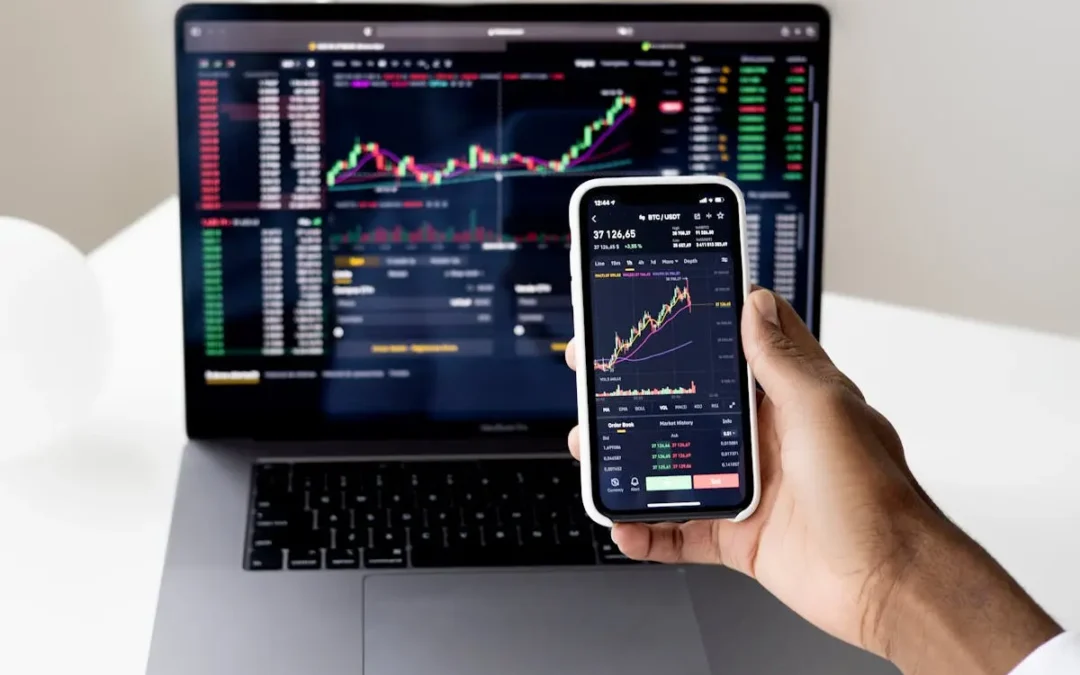Every second, over 99,000 Google searches happen. Think about that. Each search is a potential customer looking for answers, products, or services. If your business isn’t showing up where they’re searching, your competitors already have the upper hand.
Search Engine Marketing (SEM), also known as digital advertising, is the fastest way to position your business at the top of search engine results. But this isn’t about running ads and crossing your fingers. SEM, and in particular, Pay-Per-Click (PPC), is a data-driven strategy that puts your business in front of high-intent prospects—right when they’re ready to take action.
In this article, you’ll learn how to:
- Optimize your SEM campaigns for high conversions and ROI.
- Use local targeting to attract ready-to-buy customers.
- Avoid wasted ad spend by continuously refining your campaigns.
Whether you’re new to SEM or ready to take your current efforts to the next level, here’s what you need to know.
Why SEM Gets You Noticed When It Matters Most
It’s no secret that visibility on search engines can make or break your business. But why does SEM matter so much for driving growth?
While SEO helps build organic visibility over time, SEM lets you jump to the front of the line immediately. By bidding on targeted keywords, your business appears at the top of search results—exactly when users are actively searching for solutions.
The result? High-intent leads who are more likely to convert because they’re already looking for what you offer.
How Local SEM Helps Service Businesses Reach Ready-to-Buy Customers
Imagine someone searching for “best HVAC company near me.” Local SEM ensures that your ad shows up in their results right away, giving your business a huge edge over competitors.
For many of our clients, this hyper-local targeting has led to significant growth in both traffic and lead volume. Businesses that serve local markets can use location-based keywords to drive qualified leads who are ready to book services.
Building an SEM Campaign that Delivers ROI
Running an SEM campaign isn’t just about putting up ads. It’s about making sure your entire campaign—from targeting to landing pages—works together to attract and convert customers. Here are the essentials:
1. Keyword Strategy that Targets Intent
The right keywords separate success from failure in SEM. While high-volume keywords might seem appealing, they won’t deliver results unless they match search intent.
High-intent keywords, such as “emergency plumber 24/7” or “affordable small business accountant,” indicate that users are ready to take action. Targeting these terms ensures your budget is spent on people who are likely to convert.
Equally important is identifying negative keywords to avoid wasting money on irrelevant searches. For example, if you run a premium service, you may want to exclude terms like “free” or “cheap.”
2. Ad Copy that Drives Clicks
You have just a few seconds to capture attention. Your ad copy must highlight a solution to your customer’s problem and motivate them to click.
Focus on these elements for effective ad copy:
- A strong, benefit-driven headline.
- A solution to a pain point. (“Same-day service you can trust!”)
- A clear call to action. (“Get a free consultation today.”)
Businesses that craft compelling ad messages tailored to user intent consistently see higher click-through rates and lower ad costs.
3. Landing Pages Designed for Conversions
Clicks don’t pay the bills—conversions do. If a user clicks your ad but bounces off your site without taking action, you’re losing money.
A conversion-optimized landing page continues the conversation your ad started. It reassures the visitor that they’re in the right place and guides them to take the next step—whether that’s filling out a form, booking a consultation, or making a purchase.
Effective landing pages include:
- Consistent messaging: The landing page should match the promise made in the ad.
- Minimal distractions: Remove unnecessary links and clutter.
- Trust-building elements: Testimonials, case studies, or guarantees can help increase conversions.
SEM isn’t set-it-and-forget-it. Success requires regular analysis and adjustments to ensure your campaigns are performing at their best.
Key Metrics to Monitor
These metrics provide valuable insights into campaign performance:
- Click-through rate (CTR): Are your ads capturing attention? A low CTR may signal the need for more engaging copy.
- Conversion rate: How many clicks turn into leads or sales? Optimizing your landing pages can significantly improve this.
- Cost per conversion: Are you spending efficiently to generate leads? Tracking this helps you maximize ROI.
A/B Testing for Performance Gains
Many of our clients have seen up to a 20% increase in conversions by regularly testing and refining their SEM campaigns. This process allows you to double down on what works while eliminating underperforming elements. Testing ad headlines, images, and landing page designs helps ensure your campaigns stay fresh, relevant, and optimized for maximum impact.
By continuously learning from the data, your business can adapt to shifts in search behavior, improving both short-term results and long-term growth potential.
How SEM Fits Into a Multi-Channel Marketing Strategy
SEM works best when integrated with other digital marketing tactics, creating a powerful, multi-channel approach to visibility and conversions. When each element of your strategy complements the others, you can create a lasting impact that strengthens both immediate and long-term growth.
Why SEM and SEO Work Better Together
SEM delivers immediate traffic through paid ads, but SEO builds long-term credibility and authority. By combining these strategies, your business can dominate both the paid and organic sections of search results pages.
For example, a potential customer searching for “local tax services” may see both your ad and your organic listing. This dual presence builds trust and boosts the likelihood of clicks—helping you win over the competition.
Additionally, insights gained from SEM, such as high-performing keywords or top-performing search queries, can inform your SEO efforts to further enhance your organic rankings.
Strengthening SEM With Content Marketing
Content marketing strengthens your SEM campaigns by enhancing user engagement. When users click on your ad, relevant content like guides, case studies, or blog posts can keep them on your site longer and motivate them to take action.
Moreover, great content improves your ad relevance score—Google’s way of rewarding high-value experiences. This can lead to lower cost-per-click (CPC) rates and better ad performance overall.
Content also increases opportunities for remarketing. If a visitor doesn’t convert on their first visit, retargeting them with ads that highlight your value-add content can guide them back into your funnel and closer to a conversion.
How Strategic SEM Drives Business Growth
SEM isn’t just about increasing traffic—it’s about attracting the right kind of traffic. To maximize growth, your campaigns must align with business goals by targeting high-intent users, optimizing landing pages, and continuously refining performance.
Many of our clients, most of which are local businesses or businesses that operate in multiple locations, have experienced sustained growth by adopting strategies that focus on:
- Hyper-targeted local campaigns that reach customers ready to make a decision
- Conversion-optimized landing pages that match ad messaging and reduce bounce rates
- Regular performance testing to improve results and reduce acquisition costs
- Regular experimentation with new campaigns and new variations, including A/B testing.
SEM allows businesses to stay visible, adaptable, and ahead of their competitors in competitive markets.
Unlocking Consistent Growth Through SEM
Your business’s success depends on its ability to attract high-intent customers—at the exact moment they’re searching for your services. With SEM, you can take control of your visibility, ensure consistent lead generation, and maximize your marketing ROI.
SEM isn’t just about getting more clicks; it’s about building a results-driven, scalable strategy for sustainable growth. At Mikesell Digital Consulting, we specialize in crafting SEM strategies that go beyond surface-level visibility. From targeted ad placements to conversion-focused landing pages, we ensure your campaigns deliver measurable success.
Ready to take your business to the next level? Contact us today to explore how a custom SEM strategy can drive growth and give you an edge over the competition.
Key Takeaways
- SEM provides fast visibility, targeting high-intent customers when they’re ready to convert
- Success relies on strategic keyword selection, engaging ad copy, and landing pages built for conversions
- Integrating SEM with SEO and content marketing amplifies results and improves ROI over time
- Regular testing, tracking, and optimization are crucial to maintaining performance
It’s time to put your business in front of the customers who need you most. Let’s build a strategy that drives growth, one click at a time. Get in touch with our experienced SEM team.







